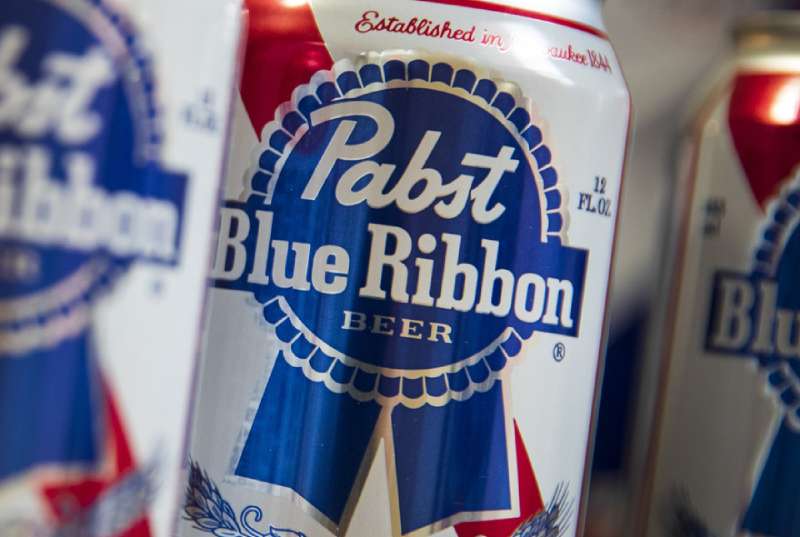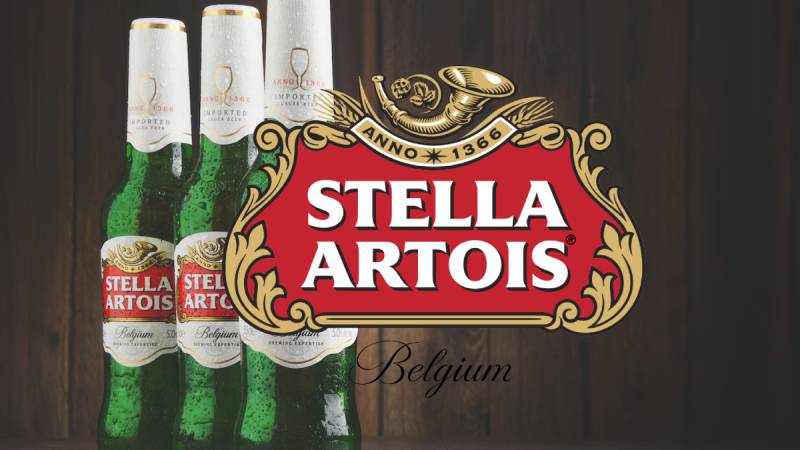The Pabst Blue Ribbon Logo History, Colors, Font, And Meaning

Imagine a tapestry of Americana woven into one iconic emblem: the Pabst Blue Ribbon logo. More than just a symbol of a storied lager, it’s a patchwork of history, design evolutions, and cultural impact.
Beneath its surface, tales of graphic artistry and marketing genius intertwine, each thread a testament to the enduring legacy of an American staple.
In the unfolding narrative of logo design, few chapters are as colorful as the one painted by this legendary brewery insignia.
As a craft steeped in visual storytelling, I explore the fusion of aesthetics and identity that this logo encapsulates. It stands as both a beacon for beer enthusiasts and a masterclass in branding.
This article serves as a portal to the past and a glimpse into the strategies shaping such emblematic visuals. You’ll embark on a journey that delves into the tapestry of the PBR emblem, its place in the alcoholic beverage industry, and its resonance in hipster culture.
From the vintage beer logo that adorned 19th-century bottles to the modern beer brand identity, each paragraph is crafted to enrich your understanding of this potent symbol.
The Meaning Behind the Pabst Blue Ribbon Logo
Why It’s Not Just Another Beer Label
The Pabst Blue Ribbon logo isn’t just a pretty face. Beneath its eye-catching design lies layers of meaning that tie back to the brand’s rich history and ethos.
When you gaze at the logo, you’re essentially taking a trip back in time. It’s about craftsmanship, quality, and that undeniable feeling of winning.
A Ribbon Worth Wearing
Back in the day, a blue ribbon was the mark of superior quality. It was like getting a gold medal. This ribbon on the logo isn’t just for looks—it’s symbolic of the brand’s commitment to excellence and its history of award-winning brews.
The History of the Pabst Blue Ribbon Logo
From Humble Beginnings
Once upon a time in the 19th century, Pabst was known as Best Brewery. Yep, “Best.” And as it grew in popularity, the need for a standout logo became apparent. The evolution of the logo parallels the brand’s journey from being a local favorite to a national sensation.
The Blue Ribbon Era
Pabst secured its place in the Beer Hall of Fame when it bagged the Blue Ribbon prize at the World’s Columbian Exposition in Chicago in 1893. This victory was so significant that the brand decided to wear it with pride, leading to the birth of the famed “Blue Ribbon” in its name and logo.
The Colors of the Pabst Blue Ribbon Logo
Blue: The Color of Victory
The dominant blue isn’t just a random pick. It’s the shade of triumph, the hue of the ribbon that started it all. It evokes feelings of trust, reliability, and yes, a little bit of that chill vibe you want with a cold brew.
Red & White: Bold and Pure
The splashes of red and white aren’t mere aesthetic choices. Red brings the passion, the heart, and the fire of the brand. White? That’s the canvas, the purity, the untouched quality that Pabst prides itself on.
The Font Used in the Pabst Blue Ribbon Logo
Vintage Yet Timeless
Ever notice how the font feels both old-school and kind of… now? It’s a nod to Pabst’s storied history while ensuring it doesn’t feel stuck in the past. The typeface, with its bold and elongated characters, screams confidence.
Standing Out in a Crowd
In a world filled with modern, minimalist fonts, the Pabst Blue Ribbon logo font takes a different path. It’s assertive without being aggressive, ensuring the brand’s voice is heard loud and clear in a sea of sameness.
The Evolution Over Time
Keeping With The Times
Like all great things, the Pabst Blue Ribbon logo didn’t remain stagnant. As decades rolled on, subtle tweaks ensured it stayed relevant. While the core elements remain, these adjustments are like chapters in an ongoing story.
Era-Defining Shifts
From adjustments in the shade of blue to shifts in positioning of elements, each change reflects the mood and style of the era. It’s a logo that respects its roots while dancing to the tunes of the times.
Cultural Impact and Popularity
Beyond Just Beer Enthusiasts
From dive bars to indie music scenes, the Pabst Blue Ribbon logo has become synonymous with a certain kind of cool. It’s not just about beer; it’s about an attitude, a lifestyle.
In Pop Culture

Movies, TV shows, merchandise – you name it, and the Pabst logo has probably made an appearance. It’s transcended the realm of beverages to become an emblem of counterculture, individuality, and authenticity.
FAQ On The Pabst Blue Ribbon Logo
What Is the History Behind the Pabst Blue Ribbon Logo?
The PBR logo’s past is a captivating tale of American lager heritage. It originated in the late 19th century, symbolizing the premium quality beer that won a blue ribbon at the World’s Columbian Exposition in 1893.
Since then, it’s become an unmistakable part of beer advertising imagery.
Why Does the Pabst Logo Feature a Blue Ribbon?
It’s a nod to the award-winning legacy. After securing the title at the Columbian Exposition, Pabst Brewing Company started to tie a silk blue ribbon around each bottle’s neck as a badge of excellence—a tradition that was a graphic design hit and stuck with the brand.
Has the Pabst Blue Ribbon Logo Changed Over Time?
Yes, like any enduring brand identity, the logo has evolved, reflecting shifts in the brewery’s image and the alcoholic beverage industry.
The core elements remain, but the design has been streamlined for modern branding while paying homage to its vintage beer label roots.
What Does the Pabst Logo Represent?
It’s a complex emblem of quality, tradition, and Americana. Beyond representing the Milwaukee brewery, it symbolizes a connection to a bygone era of craftsmanship and the cultural tapestry that beer branding weaves into the American social fabric.
How Can I Identify an Authentic Pabst Blue Ribbon Logo?
Authenticity lies in the details; genuine logos bear the trademarked PBR insignia, rich colors, and the iconic blue ribbon insignia. Replicas might miss these nuances or carry slight alterations that distinguish them from the brewery trademarks.
What Impact Has the Pabst Logo Had on Beer Culture?
Significantly so, becoming an unofficial banner for the resurgence of retro brands in hipster culture. It personifies a blend of affordability with anti-mainstream appeal, ingraining itself in the lifestyle and even in craft beer label design trends.
How Is the Pabst Blue Ribbon Logo Used in Marketing?
PBR utilizes its logo strategically, aligning with its status as an iconic American lager. The logo adorns everything from beer cans to swag, anchoring advertising campaigns and appealing to its diverse fanbase with a mix of nostalgia and contemporary cool.
Is the Pabst Blue Ribbon Logo Considered a Classic?
Absolutely. Its endurance and ability to remain culturally relevant position it as a classic brewery design, resonating with both older generations and new drinkers attracted to retro beer packaging graphics and the authenticity it represents.
What Is the Color Scheme of the Pabst Blue Ribbon Logo?
Historically, it’s featured a distinctive palette of red, white, and blue, mirroring the American flag—a fitting choice for a beer that’s become part of the national psyche. These colors contribute to the iconic US beers theme that PBR embodies.
Can the Pabst Blue Ribbon Logo Be Used Commercially?
Pabst Brewing Company holds the rights, so commercial use without permission infringes on the legal entity of the trademark.
Businesses and artists must seek approval to use the logo for commercial bar and pub signage, merchandise, or any other venture.
Conclusion
As the narrative unwinds, the journey through the tapestry of the Pabst Blue Ribbon logo reaches its twilight—leaving imprints of a storied past, rich in tradition and brimming with a charm that echoes through the annals of design. This emblem serves not only as a beacon for the brand but as a compelling chronicle that captures the spirit of an era and a brewing giant’s indelible mark on the cultural landscape.
- The vintage beer logo transcends mere graphic elements; it embodies a heritage that resonates profoundly with beer connoisseurs and design aficionados alike.
Indelibly, this symbol—an amalgam of trademarks, hip culture, and spirited advertising campaigns—is etched into the fabric of the alcoholic beverage industry. And despite the forward march of time, the essence of what made the logo an icon remains untouched.
In closing, the Pabst insignia is more than just a label; it’s a narrative, ever-unfolding, a testament to the transformative power of design fused with history. Its ribbon may be blue, but it’s undeniably gold in the annals of Americana.
If you enjoyed reading this article about the Pabst Blue Ribbon logo, you should read these as well:
- The Miami Heat Logo History, Colors, Font, and Meaning
- The Coca-Cola Logo History, Colors, Font, and Meaning
- Awesome Bottle Mockups For Designers (Free and premium)
- Why Visual Data is Good for Business - 14 June 2024
- Superhero Logos Examples: Emblems of Power - 14 June 2024
- Unique and Bold Magenta Color Palettes - 14 June 2024












